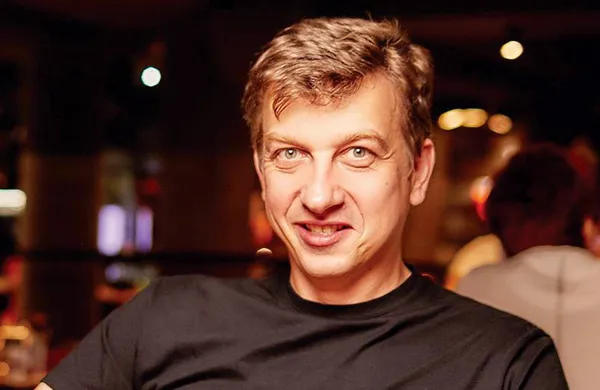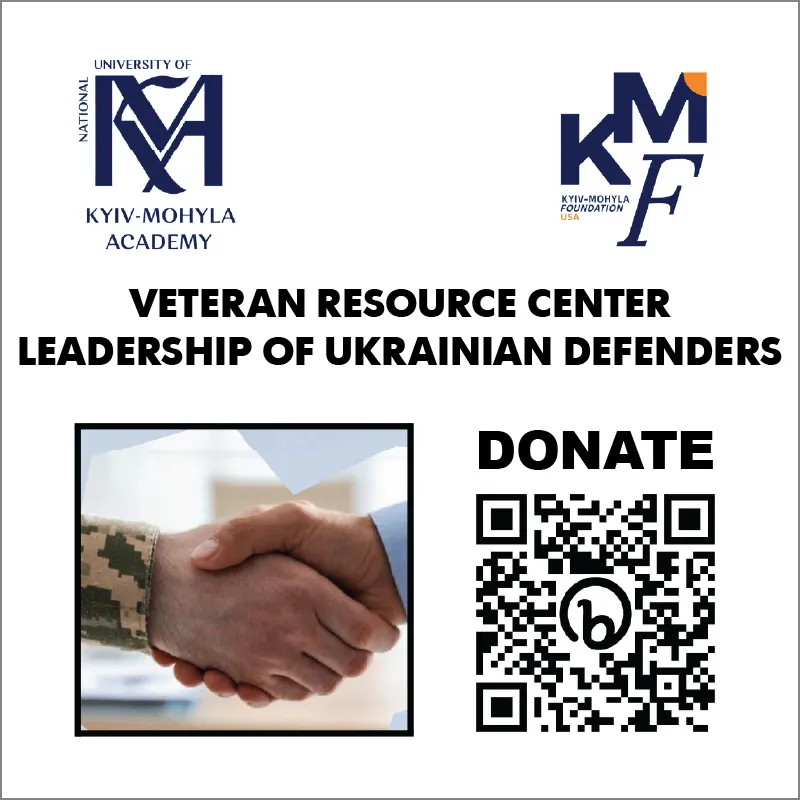
35 years since the Student Revolution on Granite
For several decades now, Kremlin political scientists and historians have been fond of repeating that Ukraine's independence “fell from the sky” or, at most, from the ink of the pens used to sign the documents in Belovezhskaya Pushcha on the dissolution of the USSR by three people: Kravchuk, Yeltsin, and Shushkevich.
October this year marked the 35th anniversary of the first Ukrainian Maidan in modern history, the first of three protests that earned a place in history under the name “revolution”: the “Student Revolution on Granite,” the “Orange Revolution,” and the “Revolution of Dignity (Euromaidan).” Roman Bezsmertnyi, a well-known Ukrainian politician and diplomat, one of the leaders of the “Orange Maidan” and a close associate of Yushchenko during that period, has repeatedly emphasized that, in his opinion, only the first, student revolution was a true “revolution,” because, unlike the two subsequent large-scale protests, only it led to a change in the social order. A famous political prisoner and later one of Ukraine's leading politicians, Vyacheslav Chornovil, has repeatedly emphasized that “without the Student Revolution in October 1990 and the Chervona Ruta festival in 1989, Ukraine would not have become independent.” Obviously, this is a somewhat exaggerated emotional assessment, because in reality there were more components in the struggle for independence, but the high assessment of well-known contemporaries did not appear in vain.
For the first time, tents were set up on the main square of Kyiv, and even the name “Maidan Nezalezhnosti” (Independence Square), which replaced the old Soviet name, was a result of the “Student Revolution.” For the first time, a mass political street hunger strike with a large number of participants was announced. For the first and only time in Ukrainian history, a general student strike took place in many cities across Ukraine. The strike involved not only Kyiv, Lviv, and Ivano-Frankivsk, where there were powerful student organizations, but also smaller cities such as Brody in western Ukraine and Sumy and Kremenchuk on the Dnieper River. For the first time, “state buildings” were seized during the action. These were the Red Building of Shevchenko University, the Yellow Building of the same university, and one of the buildings of the Kyiv Polytechnic Institute. For the first and only time, such a large-scale action was led by student leaders, not senior figures. Most importantly, for the first time, faced with the street power of the Resistance Movement, the communist authorities were forced to accept the protesters' demands and even vote in the Verkhovna Rada on a resolution to meet the demands of the participants in the action. For the first time, the prime minister was forced to resign, again in response to the demands of the participants in the action.
The “student revolution on a grant” was undoubtedly the most successful of the protests during the struggle for independence, completely shattering Moscow's “theory” that Ukraine did not fight for its independence. Ukraine fought, we fought, and independence did not “fall from the sky”; we achieved it through sacrifice and systematic struggle.
At the same time, the “Student Revolution on Granite” was also a lost opportunity for Ukraine. The “Student Revolution” gave Ukraine a chance to remove the entire old communist establishment from power. If the first and main demand of the “Student Revolution” had been fulfilled, Ukraine would have followed the course of the more successful countries of Central Europe (Poland, the Czech Republic, Lithuania, Estonia, and others), would already be in the EU and NATO, and this means that fascist Russia would not have dared to attack us.
In October 1990, I was one of the three official leaders of this protest, and together with several other student leaders, I was also its initiator and organizer, so I have both reasons to be proud and reasons to be sad.
In 1990, I headed the Ukrainian Student Union in Kyiv, an organization that fought for independence. There was another student organization in Lviv, the Student Brotherhood, which was larger and more influential, because since the late 1980s, Lviv had been the driving force behind the liberation movement. Many initiatives were born there and later spread throughout Ukraine. We visited our friends in Lviv, learned from their experience, and engaged in heated discussions. Unlike our older comrades in the Resistance Movement, we wanted to use a nationwide student strike as a tool in the fight for independence. We were convinced that the authorities were not afraid of newspaper articles and rallies that were dispersed at the end of the regulation period. Instead, the authorities would not be able to withstand us if we managed to mobilize hundreds of thousands of Ukrainian students to fight at the same time. The Student Brotherhood in Lviv was headed by Markiyan Ivashchyshyn, an extremely influential figure in the student movement. As the head of the organization, I understood that we needed to carry out a non-trivial action that would strike a chord with students. That is why the idea of a mass hunger strike using tents came to fruition. We quickly agreed on the general outline of the idea, after which we began to prepare independently. At this stage, we had not yet agreed on either the demands or the leadership; this was done on the eve of the actual march to the square, when the Lviv students arrived in Kyiv. Therefore, the “Kyiv” demands differed radically from the “Lviv” ones. The first demand I wrote down was “re-elections of the Verkhovna Rada on a multi-party basis.” I understood that there was a situation where society wanted change, and the authorities were shaken. We had to seize the moment and remove the communists from power. In order for the elections to be competitive, it was necessary to deprive the communists of large funds and opportunities, so my second demand was “the nationalization of the property of the Communist Party of the Soviet Union and the All-Union Leninist Young Communist League.” The third demand was a veiled demand for Ukrainian independence. So I wrote “refusal to sign the Union Treaty” as the third demand. The demands of the Lviv residents were in line with the ideas that prevailed among the leadership of the People's Movement, because their contacts with each other were closer than ours. These demands were that Ukrainian young men should serve only within Ukraine and that the current prime minister should resign. The Verkhovna Rada had already adopted a resolution on such military service, and I personally considered the prime minister's resignation irrelevant, because I was raising the issue of re-electing the Verkhovna Rada as a whole, so I considered the prime minister's resignation a minor issue. Others might have spent months arguing, or even fighting, over whose demands were more important. But the idea of an independent Ukraine was much more important to us than tactical differences, so we took all the demands and combined them. Similarly, we demonstrated the same successful approach to forming leadership. We did not start discussing who should have priority: Doniy, who came up with the idea, or Ivashchyshyn, who headed a much more powerful organization. We simply created a co-chairmanship. And to show that Ukraine is united, not just Kyiv and Lviv, we appointed Oleg Barkov, who headed the USS in Dniprodzerzhynsk, as the third co-chair.
One article is not enough to describe the entire course of the “Student Revolution on Granite.” In fact, I had planned all our actions six months in advance: not only the tents on the square, but also the blockade of Khreshchatyk and the seizure of the university. The only thing I planned that was not carried out was the seizure of the Verkhovna Rada. Due to the need for secrecy, only two other participants besides myself had all the information; I informed the rest 10-15 minutes before the action. That is why the vanguard of our 100,000-strong column broke through the police cordon in front of the Verkhovna Rada, but only a few activists ran to the doors.
In any case, the “Student Revolution” shook the Soviet system and showed Ukrainians that the old order would fall and Ukraine was destined for independence.
For each of the five demands, a decision was made to fulfill them either fully or partially. However, the re-election of the Verkhovna Rada did not take place on time. Because, apart from the student leaders, only 16 deputies of the Verkhovna Rada, led by the unforgettable Stepan Khmara, supported this idea and joined us. The rest of the leadership of the People's Movement and the People's Council tried to put more pressure on us than the KGB and the Communist Party. They were all afraid of re-elections; none of them wanted them. The most progressive among them, Vyacheslav Chornovil, raised the slogan of re-elections only two years later, when it was already too late, when the communist authorities, led by President Kravchuk, had already taken on the mantle of independence. And everything must be done in a timely manner.
At that moment, we did everything we could. Ukraine fought. The “student revolution” of October 1990 is proof of that. As Anatoliy Sukhyi from the band ‘Rutenia’ sang: “We went out into the square. We brought light to the square.”





